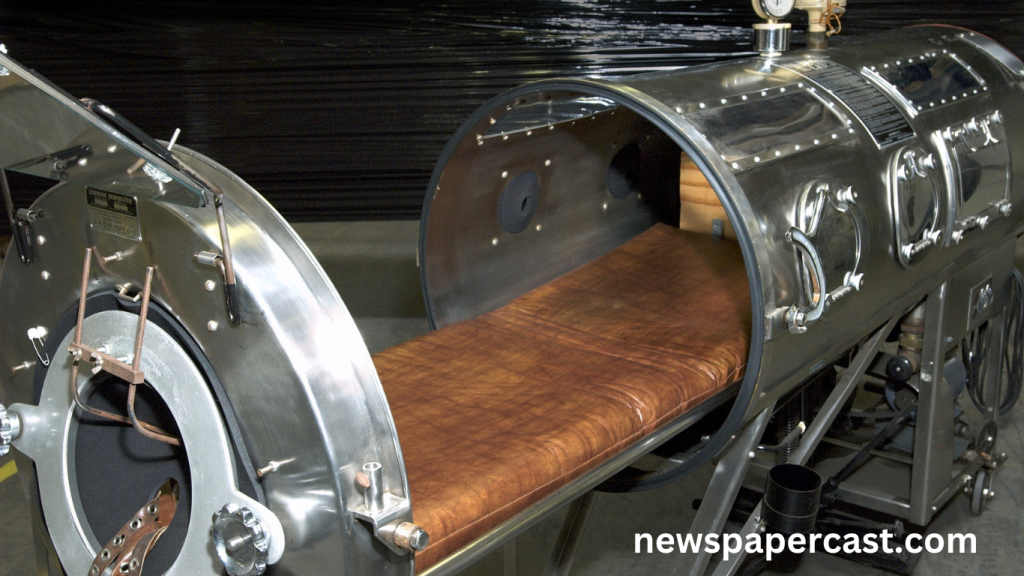The iron lung, a mechanical respirator, played a crucial role in the treatment of patients suffering from respiratory failure, especially during polio outbreaks in the 20th century. It is a negative pressure ventilator designed to assist breathing when a person’s muscles, including the diaphragm, are unable to function properly. Although largely obsolete today, the iron lung’s innovation was a turning point in respiratory care and medical technology.
The Mechanics Behind the Iron Lung
The iron lung operates based on the principle of negative pressure, which means it creates a vacuum around the patient’s body to facilitate breathing. The machine consists of a large metal cylinder that encases the patient’s body, leaving the head exposed. When activated, the iron lung adjusts the air pressure inside the cylinder, causing the chest to expand and contract. This mimics the natural process of inhalation and exhalation, helping the patient breathe even when they are unable to do so on their own.
The Role of the Iron Lung in Polio Treatment
In the mid-20th century, polio was a widespread disease, often leading to paralysis of the respiratory muscles. Many individuals with severe polio infections found themselves unable to breathe without mechanical assistance. The iron lung became a vital life-saving tool during polio epidemics, keeping these patients alive until they could recover or adapt to their condition. For many, it was their only means of survival.
The Decline of the Iron Lung
With the development of modern positive pressure ventilators and the eventual eradication of polio, the iron lung gradually fell out of use. These newer machines were smaller, more portable, and provided more precise control over airflow. The iron lung’s cumbersome design, along with its reliance on negative pressure, made it less efficient compared to contemporary alternatives.
Legacy of the Iron Lung
Despite its decline, the iron lung remains a symbol of medical ingenuity during a time of great need. It demonstrated the potential for mechanical devices to sustain life and gave insight into the development of future ventilatory technology. Although rarely used today, a few iron lung machines remain in operation, and some people who survived polio continue to use them, showcasing the enduring impact of this revolutionary device in the field of respiratory medicine.
Frequently Asked Questions
What is an iron lung?
An iron lung is a mechanical device that helps patients breathe when they cannot do so on their own.
How does an iron lung work?
The iron lung uses negative pressure to expand and contract the chest, mimicking natural breathing to assist with respiration.
When was the iron lung most commonly used?
The iron lung was widely used during polio outbreaks in the mid-20th century, especially from the 1930s to 1950s.
Is the iron lung still used today?
The iron lung is largely obsolete today, replaced by modern positive pressure ventilators, though some are still in use for polio survivors.
Who invented the iron lung?
The iron lung was invented by Dr. Philip Drinker and Dr. Louis Shaw in 1928, as a solution for polio-related paralysis.
Why was the iron lung important during the polio epidemic?
It helped save lives by allowing polio patients to breathe when respiratory muscles were paralyzed, especially in severe cases.
What replaced the iron lung?
Modern ventilators, such as positive pressure machines, replaced the iron lung due to their smaller size, greater efficiency, and more control over breathing.
Can anyone still use an iron lung today?
Some polio survivors who rely on the device for breathing continue to use iron lungs, though it’s no longer widely available.
Conclusion
The iron lung was a life-saving invention during polio outbreaks. Its unique mechanism helped patients breathe when they couldn’t on their own. While now largely obsolete, its impact on medical technology remains significant, highlighting the progress of respiratory care over time.

